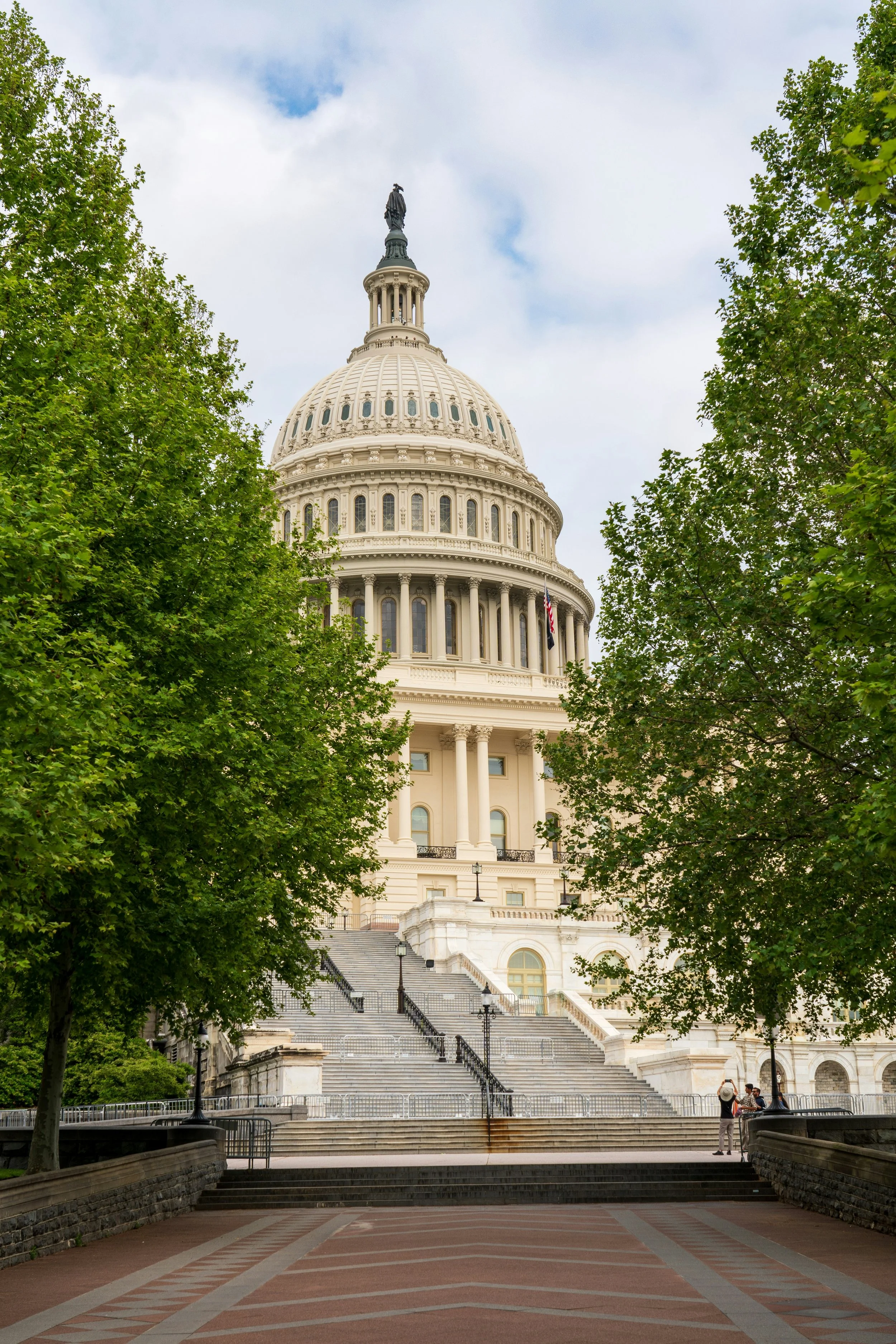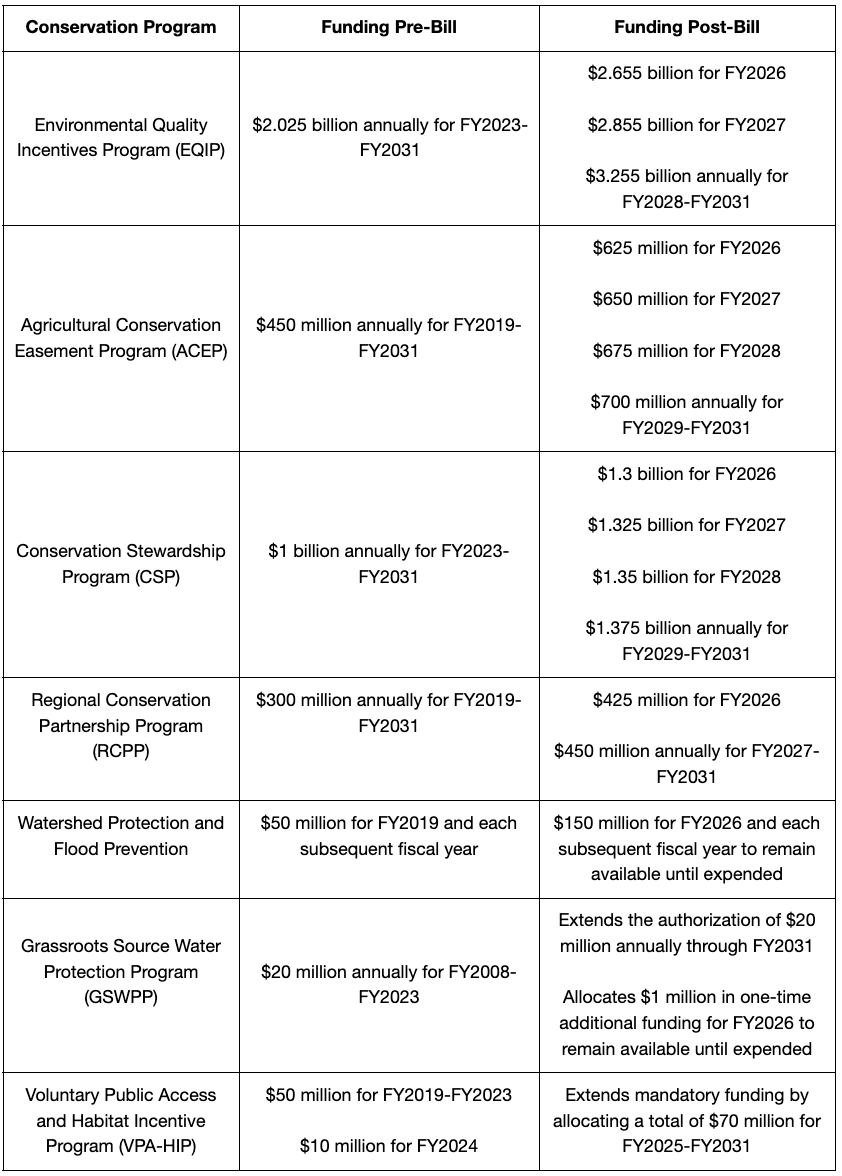Impacts of 2025 Reconciliation Bill on Soil Health
IMPACTS OF 2025 RECONCILIATION BILL ON SOIL HEALTH
July 10, 2025
The One Big Beautiful Bill Act (OBBBA), is a massive piece of legislation developed to advance President Trump’s domestic agenda, passed with a 218–214 vote, mostly along party lines, and was signed into law the following day.
Context:
The reconciliation bill, which includes major changes to spending, taxation and the national deficit, also makes major adjustments to agriculture policy and programs, with the Congressional Budget Office estimating an additional $66 billion increase in farm program spending over 10 years.
The agricultural industry, and related reporting, have focused on the significant increases to subsidies for commodity crops, and crop insurance, which have been paid for in large part by deep cuts to the Supplemental Nutrition Assistance Program (SNAP) and other nutrition programs.
Impacts on Farm Bill:
These changes are significant, not only for the funding amounts, but for the way the food and farm policy was paid for. Until recently, these policies have mostly been legislated and authorized through the Farm Bill – the massive omnibus which has supported a wide range of programs including those for farmer support, conservation, and supplemental food access for underserved communities, typically championed by a bipartisan coalition from Congress and stakeholders from agricultural communities and industries. With so many Farm Bill programs included in the recent reconciliation bill, agricultural lawmakers in the majority in Congress are now looking to the prospect of a “skinny” Farm Bill to cover unaddressed programs and policies (with a goal of passage as soon as September), although concerns remain about how such an approach can garner sufficient bipartisan support. The patchwork approach also leaves many high-demand programs dependent on annual discretionary appropriations (where applicable), a future comprehensive Farm Bill or stand-alone reauthorization packages.
Impacts on Soil Health:
The above changes are likely to indirectly impact soil health, primarily by further concentrating subsidies with larger farming operations which cover large amounts of acreage but fewer individual farmers. The increased reference prices for commodity row crops and expansions to the farm safety net, while providing support for a segment of the agriculture industry, may also inadvertently serve to discourage more diversified crop rotations or investments in soil health practices which build on-farm profitability and lessen reliance on government programs.
The following sections outline funding changes for four areas more directly related to soil health: conservation, agriculture research, specialty crops, and tax credits for clean fuel production.
***
1. Conservation Program Funding
As many readers know, USDA-NRCS conservation programs play an important role in supporting farmers in implementing voluntary conservation practices that build soil health. Historically, the programs have been oversubscribed due to the large demand from farmers and administrative obstacles.
The OBBBA both funds the major NRCS conservation programs, detailed in the table below, while rescinding the unobligated balances of the amounts appropriated for those same programs by the Inflation Reduction Act (IRA) - the reconciliation bill passed under the previous presidential administration.
While the Congressional Budget Office (CBO) officially scored the funding for conservation programs as a cut, the total amount of money that NRCS is authorized to spend has actually increased, a significant and positive development for these programs. While the reasons for CBO’s cut score are not detailed, experts believe that this probably because NRCS is unlikely to spend all of the available funds - due in part to USDA staffing reductions and shortages (limiting the ability to get existing and new grants and payments out the door, and due to the funding freezes or recissions for existing grants).
Taken all together, these developments underscore the popularity of these programs with farmers, the need for full staffing at USDA to ensure swift and efficient implementation of these programs to meet farmer demand, and echo a larger, ongoing call for more technical assistance to provide boots-on-the-ground support for producers who are seeking to build on-farm resiliency and profitability.
2. Impacts on Agricultural Research Funding
Overall, spending on agricultural research programs is projected to increase by $1.6 billion (AgriPulse). Specifically:
Annual mandatory funding for the Speciality Crop Research Initiative will increase from $80 million to $175 million (AgriPulse)
The Foundation for Food and Agriculture Research will receive an additional $37 million (AgriPulse)
The mandatory funding for the Urban, Indoor, and Other Emerging Agricultural Production Research, Education, and Extension Initiative (UIE) will be extended through FY2024-2031
The mandatory funding for agricultural research facility projects under the Research Facilities Act will be established at $125 million annually for FY2026 and each subsequent fiscal year
$60 million will be provided in scholarships for students as 1890 Institutions to remain available until expended
$8 million in mandatory funding will be established for the Assistive Technology Program for Farmers with Disabilities for FY2026 to remain available until expended
3. Impacts on Speciality Crops Funding
Funding for specialty crop block grants will be increased from $85 million to $100 million a year (AgriPulse)
Annual mandatory funding for the Speciality Crop Research Initiative will increase from $80 million to $175 million (AgriPulse)
4. Other
The Clean Fuel Production Credit, established under Section 45Z, will be extended through December 31, 2029; this credit is available for farmers growing commodities produced with soil health practices to be used as feedstocks for biofuels, including sustainable aviation fuels.
Land Core is a 501(c)3 organization that works closely with the USDA, legislators, producers, scientists, NGOs and financial institutions across the country to develop policy recommendations that build healthy soils, resilient farmers and national food security. This includes guiding the successful passage of language in both the House and Senate supporting soil health outcomes at the USDA and helping to secure over $50M in federal investment in Soil Health in the 2018 Farm Bill.
Resources: The Land Core Soil Health Bill Tracker is a comprehensive tool designed to monitor and analyze legislation related to soil health and resilience. It can be used to support bills that align with the priorities of strengthening American agriculture, promoting energy independence, and revitalizing rural communities.


